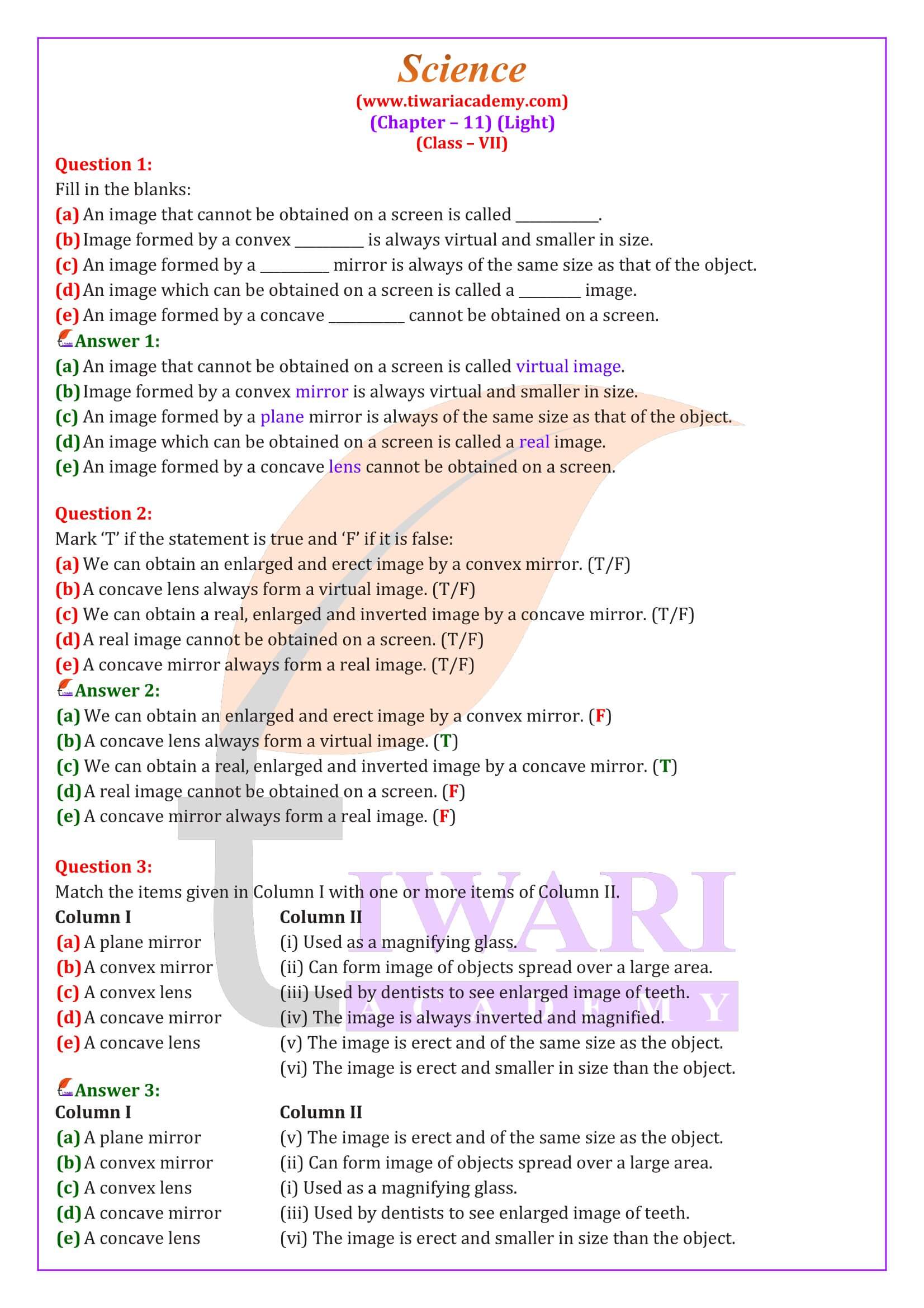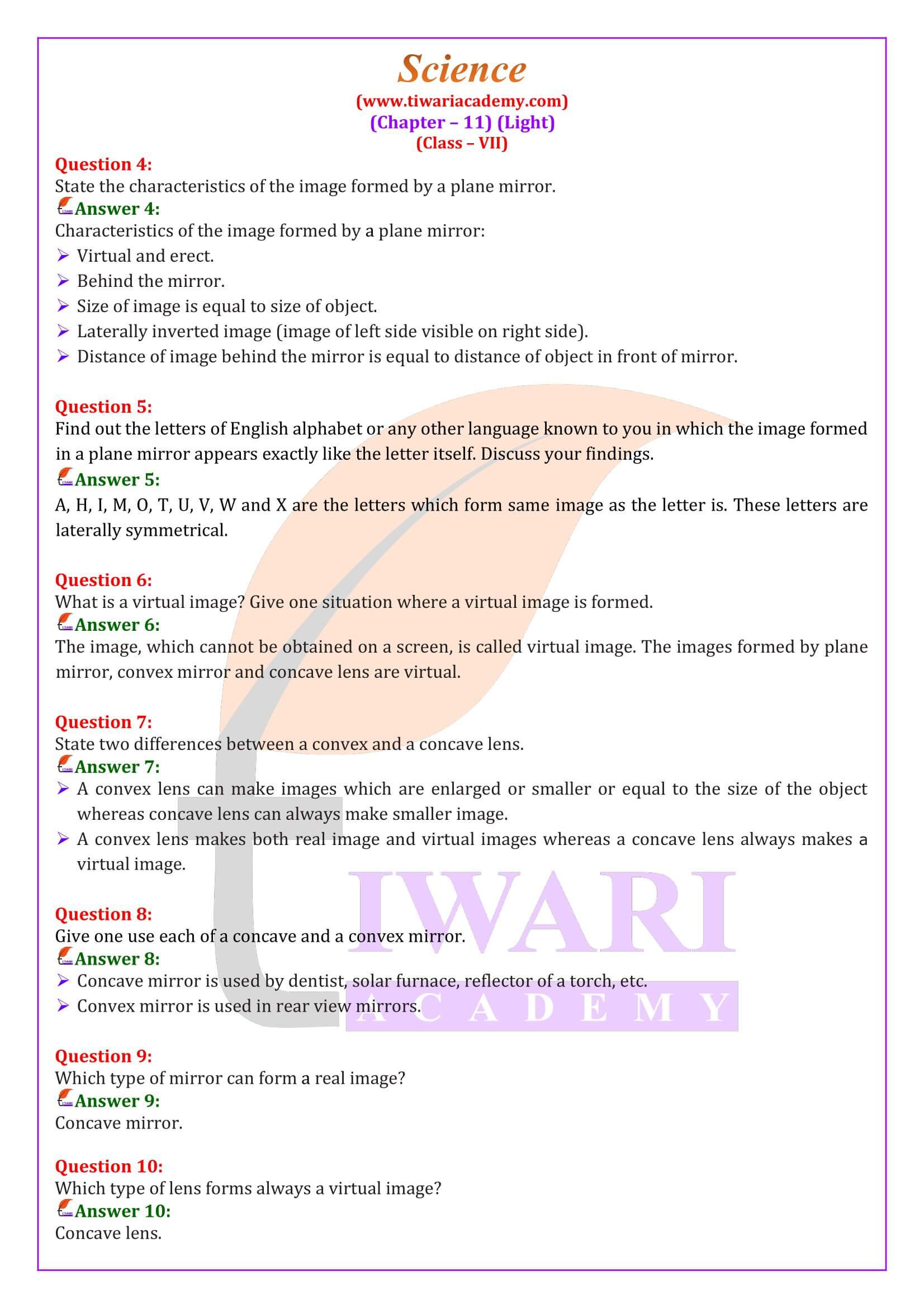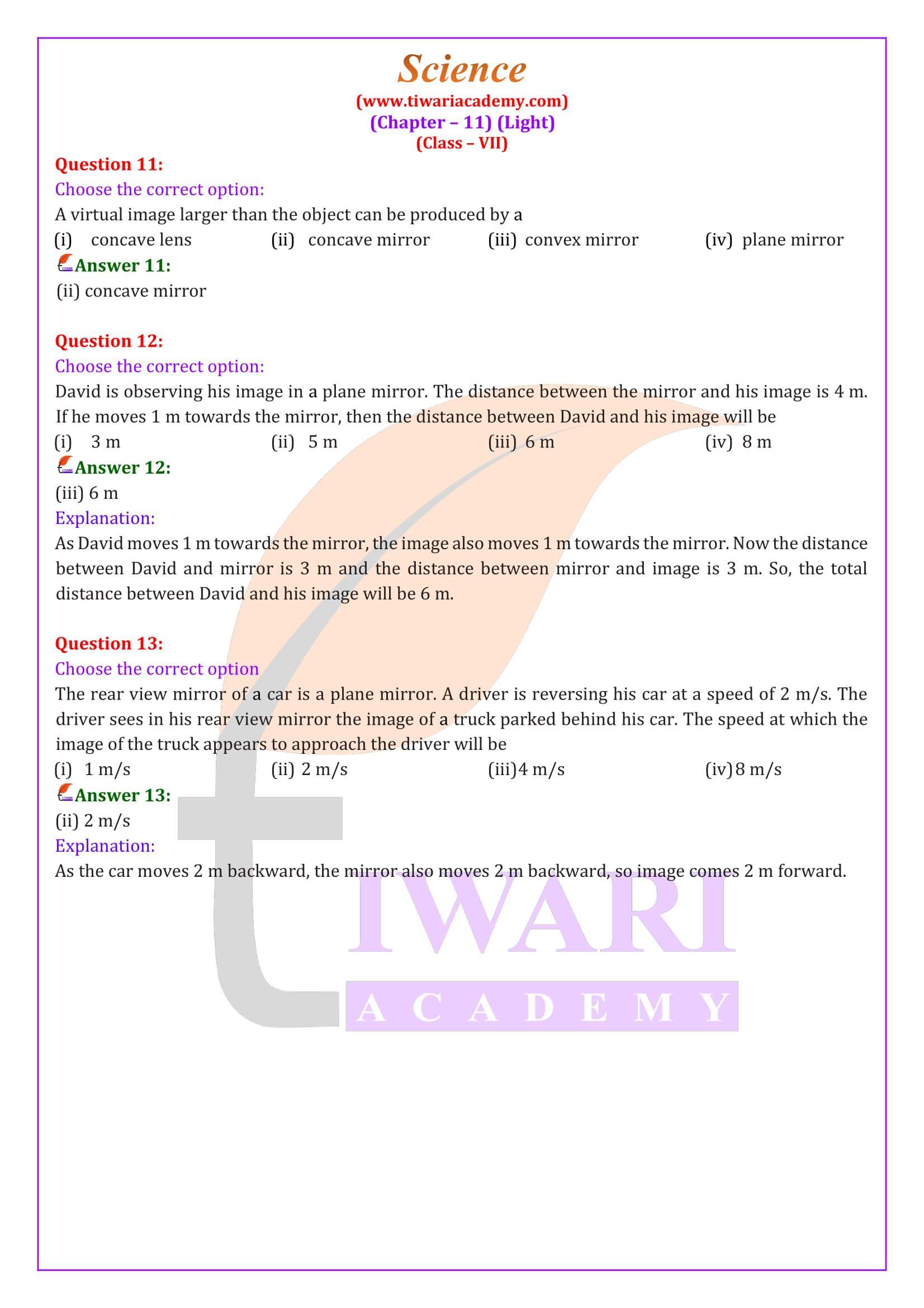Question Wise Class 7 Science Chapter 11 Solutions
Class 7 Science Chapter 11 Question Answers
Class 7 Science Chapter 11 in Hindi Medium
Class 7 Science Chapter 11 Extra Questions
Class 7 Science Chapter 11 MCQ
Class 7 Science Chapter 11 NCERT Book
NCERT Solutions for Class 7 Science
NCERT Solutions for Class 7 all Subjects
NCERT Solutions for Class 7 Science Chapter 11 Light in English Medium or Hindi Medium free to download in PDF file format or View online free updated for new academic session 2025-26. The solutions of questions and extra questions are modified and revised according to new NCERT books issued for 2025-26 exams.
| Class: 7 | Science |
| Chapter 11: | Light |
| Study Material: | MCQ, Exercises and Extra Practice |
| Academic Session: | 2025-26 |
| Medium: | Hindi and English |
Class 7 Science Chapter 11 NCERT Solutions
Class 7 Science Chapter 11 Answers
CBSE NCERT Solutions for Class 7 Science Chapter 11 Light in English as well as Hindi Medium are given below to use online or download in PDF to use it offline. All the solutions are based on latest NCERT Books. Download NCERT Solutions Offline Apps 2025-26 for all subjects free to use.
Important Questions on 7th Science Chapter 11 for Practice
1. A rainbow can be seen in the sky
(a) when the sun is in front of you.
(b) when the sun is behind you.
(c) when the sun is overhead.
(d) only at the time of sun rise.
2. You are provided with a convex mirror, a concave mirror, a convex lens and a concave lens. You can get an inverted image from
(a) both concave lens and convex lens.
(b) both concave mirror and convex mirror.
(c) both concave mirror and convex lens.
(d) both convex mirror and concave lens.
3. Which of the following can be used to form a real image?
(a) Concave mirror only.
(b) Plane mirror only.
(c) Convex mirror only.
(d) Both concave and convex mirrors.
4. You are provided with a concave mirror, a convex mirror, a concave lens and a convex lens. To obtain an enlarged image of an object you can use either
(a) concave mirror or convex mirror.
(b) concave mirror or convex lens.
(c) concave mirror or concave lens.
(d) concave lens or convex lens.
5. An erect and enlarged image can be formed by
(a) only a convex mirror.
(b) only a concave mirror.
(c) only a plane mirror.
(d) both convex and concave mirrors.
6. If an object is placed at a distance of 0.5 m in front of a plane mirror, the distance between the object and the image formed by the mirror will be
(a) 2 m
(b) 1 m
(c) 0.5 m
(d) 0.25 m
7. An image formed by a lens is erect. Such an image could be formed by a
(a) convex lens provided the image is smaller than object.
(b) concave lens provided the image is smaller than object.
(c) concave lens provided the image is larger than object.
(d) concave lens provided the image is of the same size.
8. Boojho and Paheli were given one mirror each by their teacher. Boojho found his image to be erect and of the same size whereas Paheli found her image erect and smaller in size. This means that the mirrors of Boojho and Paheli are, respectively
(a) plane mirror and concave mirror.
(b) concave mirror and convex mirror.
(c) plane mirror and convex mirror.
(d) convex mirror and plane mirror.
Answers of Class 7 Science Chapter 11 Important Questions
1 (b)
2 (c)
3 (a)
4 (b)
5 (b)
6 (b)
7 (b)
8 (c).




